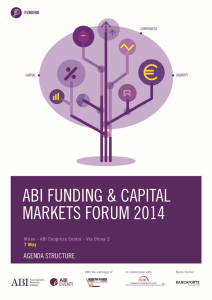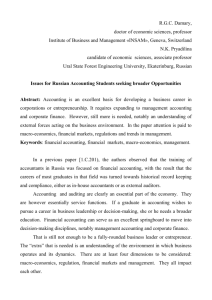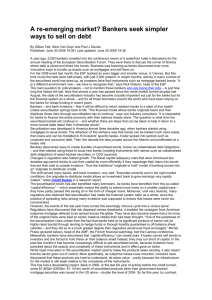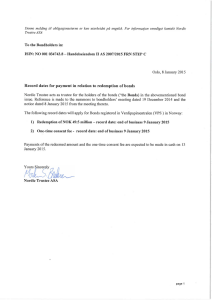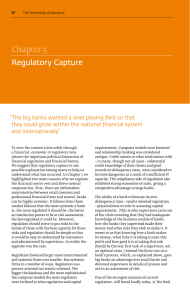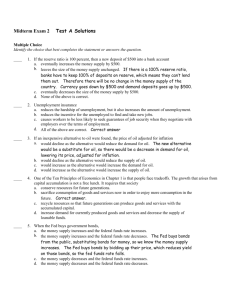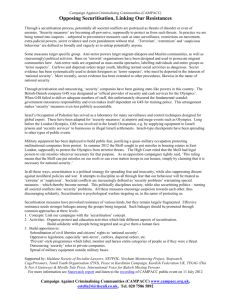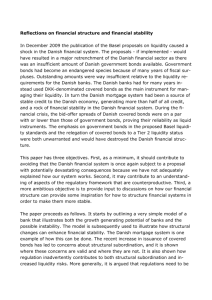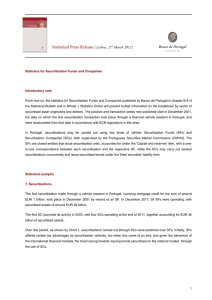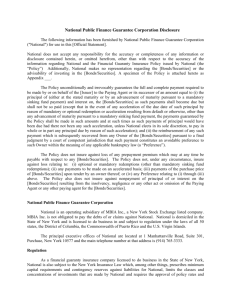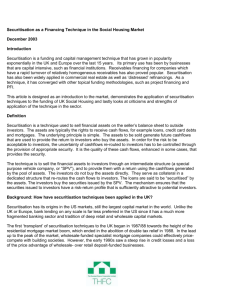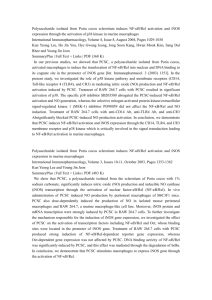LIST OF TOPICS FOR EXERCISES (TPs) – ECONS528 2014-15
advertisement
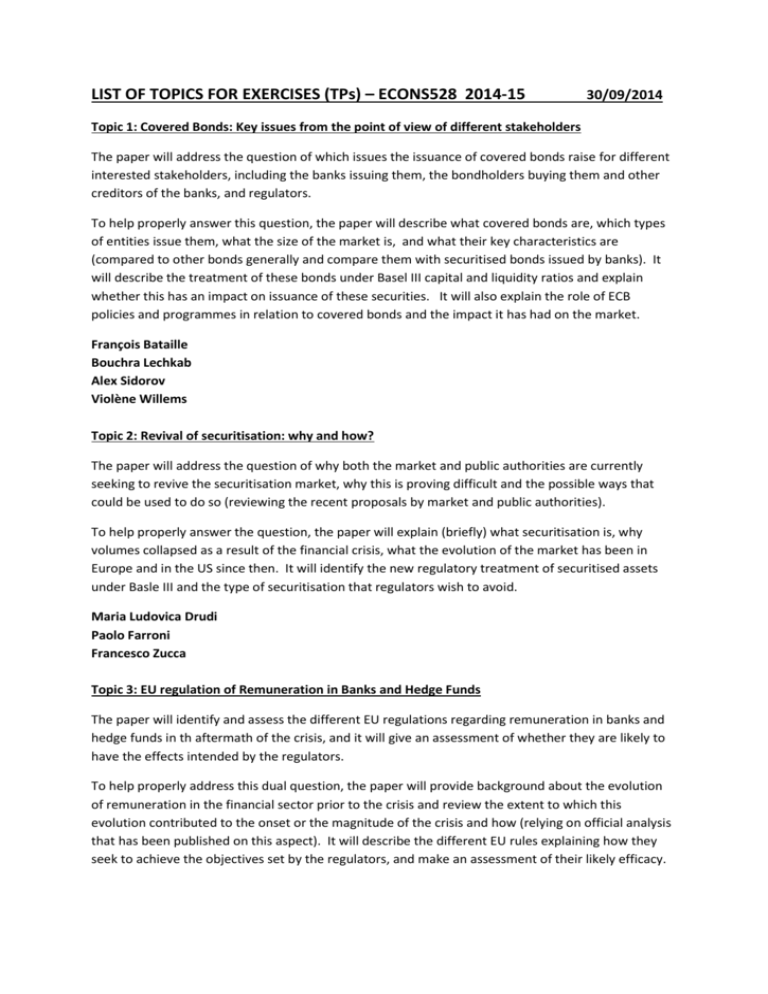
LIST OF TOPICS FOR EXERCISES (TPs) – ECONS528 2014-15 30/09/2014 Topic 1: Covered Bonds: Key issues from the point of view of different stakeholders The paper will address the question of which issues the issuance of covered bonds raise for different interested stakeholders, including the banks issuing them, the bondholders buying them and other creditors of the banks, and regulators. To help properly answer this question, the paper will describe what covered bonds are, which types of entities issue them, what the size of the market is, and what their key characteristics are (compared to other bonds generally and compare them with securitised bonds issued by banks). It will describe the treatment of these bonds under Basel III capital and liquidity ratios and explain whether this has an impact on issuance of these securities. It will also explain the role of ECB policies and programmes in relation to covered bonds and the impact it has had on the market. François Bataille Bouchra Lechkab Alex Sidorov Violène Willems Topic 2: Revival of securitisation: why and how? The paper will address the question of why both the market and public authorities are currently seeking to revive the securitisation market, why this is proving difficult and the possible ways that could be used to do so (reviewing the recent proposals by market and public authorities). To help properly answer the question, the paper will explain (briefly) what securitisation is, why volumes collapsed as a result of the financial crisis, what the evolution of the market has been in Europe and in the US since then. It will identify the new regulatory treatment of securitised assets under Basle III and the type of securitisation that regulators wish to avoid. Maria Ludovica Drudi Paolo Farroni Francesco Zucca Topic 3: EU regulation of Remuneration in Banks and Hedge Funds The paper will identify and assess the different EU regulations regarding remuneration in banks and hedge funds in th aftermath of the crisis, and it will give an assessment of whether they are likely to have the effects intended by the regulators. To help properly address this dual question, the paper will provide background about the evolution of remuneration in the financial sector prior to the crisis and review the extent to which this evolution contributed to the onset or the magnitude of the crisis and how (relying on official analysis that has been published on this aspect). It will describe the different EU rules explaining how they seek to achieve the objectives set by the regulators, and make an assessment of their likely efficacy. Stéphanie Baldinucci Mersud Mehovic Christophe Scheer Topic 4: Contingent Convertible Bonds (CoCos): advantages and disadvantages The paper will address the question of the pros and cons of CoCos and will assess if the current regulatory framework is adequate to strike the optimal balance from the point of view of financial market stability. To help properly answer this dual question, he paper will describe what Cocos are, what issuers are seeking to achieve, and what drives the appetite of investors in such securities, including macroeconomic and regulatory drivers. It will describe the Basel III regulations applicable to CoCos and assess whether this framework is adequate to promote financial stability (as opposed to other possible objectives). Luigi Ognimè, Pierpaolo Del Re Jack Speciale Topic 5: Regulation of Rating Agencies and of Use of External Ratings The paper will address the question of what is the impact of the new EU regulations on rating agencies and on the use of external ratings by regulators and the private sector, making an assessment of whether these new regulations can be expected to improve financial stability and reduce risks. To help properly answer this question, the paper will first briefly describe the role of rating agencies and ratings, explain the use of internal ratings by banks, and will describe the contribution that rating agencies and the use of external ratings may have played in the 2007 financial crisis and the 2011 sovereign debt crisis. Jungwoong (Michael) Lee Isabella Sexton Morten Svendsen Topic 7: Exchange Traded Funds: Benefits and Potential Concerns The paper will examine the advantages and potential concerns of ETFs (both for consumers and for the stability of markets generally) and review how the current and prospective regulatory environment in the EU is seeking to address these concerns. For this purpose, the paper will also describe what ETFs are (physical and synthetic), set out the key characteristics of this product compared to other funds and explain the reasons for its fast growth , setting the context to allow addressing the question above. Mariam Nayyar Marta Villamor Martin Topic 8: Sovereign Wealth Funds: Trends, Opportunities and Concerns The paper will address the specific questions of how the SWF is currently developing in response to market and geopolitical conditions, and the opportunities that this form of financing can create (from the point of view of companies looking for funding, but also more generally as a way of efficiently recycling resources domestically, regionally and globally), as well as the concerns that it has raised and how these concerns are being addressed (partly or fully). In order to properly answer these questions, the paper will describe what a SWF is, which are the main SWFs across the world, and how they can be distinguished from other state-governed structures. It will also briefly review the past evolution of SWFs up to now and describe the measures that were agreed internationally to address some of the prevailing concerns. Chang, Chiao Min Chang, Meng Han Lin,Chun Tse
